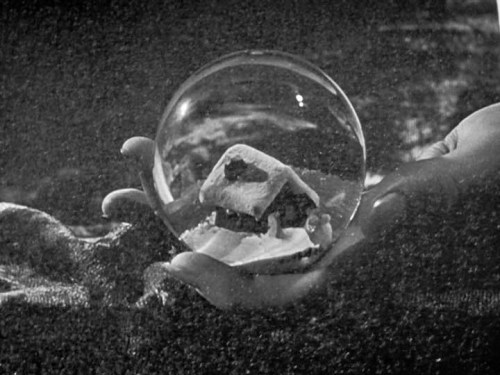“The miniature is power: over the world of things we would like to possess but do not.”
– Sarah Higley, “A Taste for Shrinking: Movie Miniatures and the Unreal City”, Camera Obscura
What if the worlds we inhabit in videogames aren’t huge, but are in fact microscopic? Not sweepingly epic stretches of geography, but instead the tiniest of tiny realms, magnified for our pleasure? In his most recent post on Fable II, Michael Abbott called the miniature has been one I’ve been mulling over for some time now, and it took this perfectly apt description to fire up my mind again.
We often talk about the sheer size of videogame worlds: the ‘scope’ of Oblivion, or the complete and deep universe of Mass Effect. While in one sense, we might be absolutely right – given our scale, these universes are often massive, and can take some time to traverse – in another, it’s more interesting to think in other, less spoken of ways.
In many ways, the videogame universe is actually microscopic. These are minute worlds, snow-globe miniatures that we can observe from the safety of reality while still enacting a large amount of control over our fictional place. The screen and the console are used to create scaled replica of real space: the television or monitor, in this case becomes part of our architectured surroundings, a frame through which we view our worlds (I owe this wonderful concept to Anne Friedberg, from her The Virtual Window, 2006). We magnify these worlds through our screens, and we shake up the snow with our controllers.
After all, from a purely physical standpoint, in-game worlds are tiny. They are representations, or realisations of microscopic data through combination of hardware and disk; a camera obscura for modern times allowing us to view this world in ways we normally couldn’t. This is how we bring such gigantic worlds into our own homes, by shrinking ourselves into a shrunken world, and tricking ourselves into believing they are now large again. The line between macro and micro has always been a fine one. We are able to navigate these worlds precisely because we are able to step back from them, and pull ourselves outside the world’s grasp.
In a sense, it isn’t surprising that it is so easy to think of games in such terms. After all, one antecedent of the videogame is the tabletop role-playing game, itself largely subject to the same miniature world principles. And how many times have you heard The Sims be described as a ‘dollhouse’? Videogames present us with room boxes, little clockwork universes that can be wound up and left running for days, like Majora’s Mask. Fable II shows us the wonder of a wide universe, the appeal of which is not exploration but interaction. Like Animal Crossing, it makes you wonder what the citizens of your Ant Farm are up to while you’re out, or have better things to do.
Watch this:
Now, go watch some real Halo 3. You can’t tell me that after seeing this ad you can’t not see the little Spartans as miniatures come alive. This is the ultimate expression of our childhood fantasies; of lowering your head to the carpet, closing one eye, and watching as your action figure wreaks havoc upon your sibling’s army. Of having the power to look down at miniature worlds from a massive perspective. Of power over things we would like to possess but do not.

